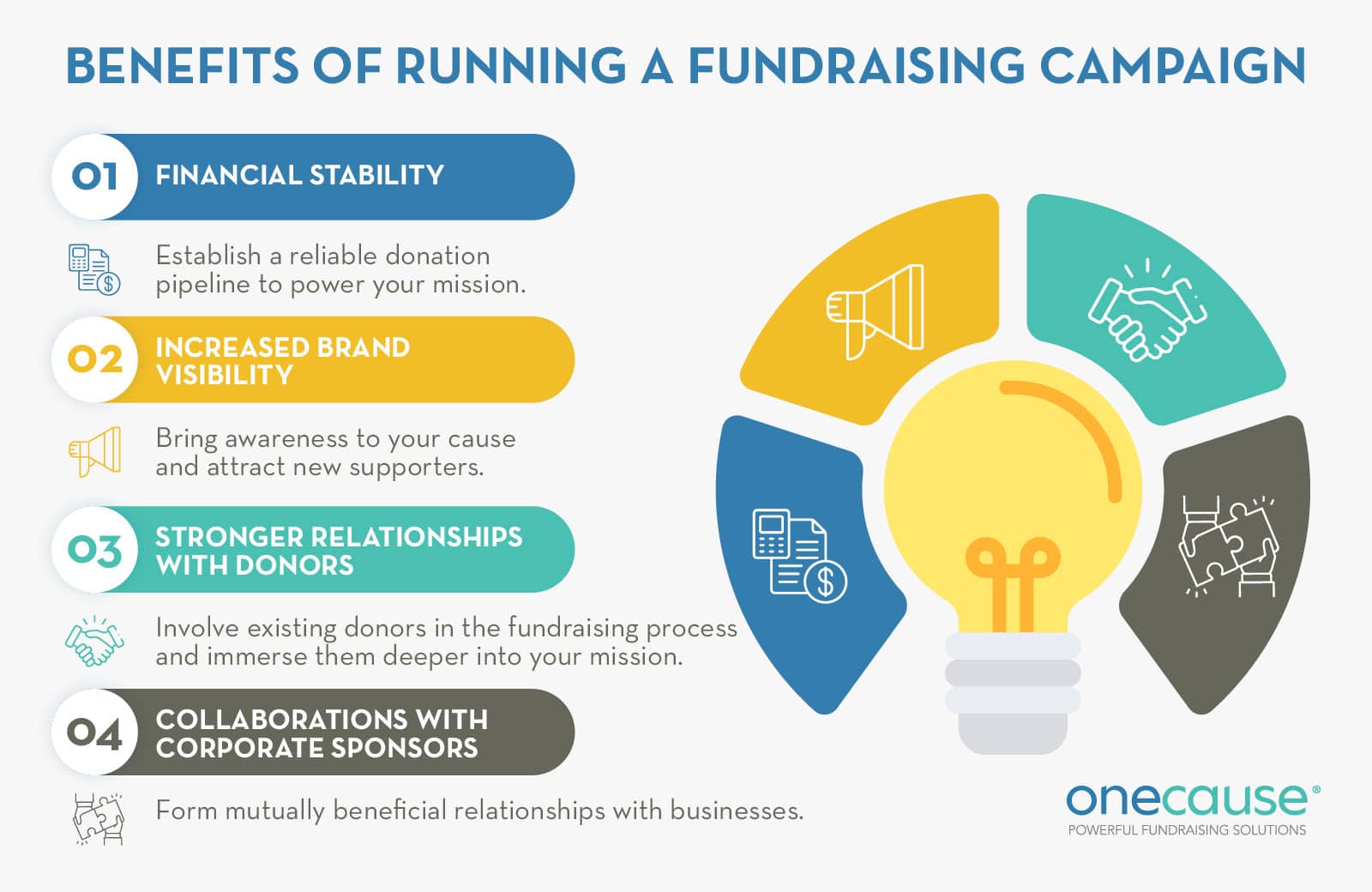Online Fundraising: Proven Techniques to Elevate More Funds for Your Nonprofit
Wiki Article
The Function of Community Interaction in Nonprofit Fundraising: Structure Lasting Relationships for Sustainable Support
Neighborhood involvement is progressively acknowledged as a critical part of successful not-for-profit fundraising. The approaches and techniques used to involve areas differ widely, raising crucial inquiries about efficiency and influence.Recognizing Neighborhood Interaction
Community interaction is a crucial element of effective not-for-profit fundraising initiatives. It refers to the approaches and tasks that organizations use to link with their local neighborhoods, cultivating connections that are equally helpful. Comprehending community interaction entails acknowledging its multifaceted nature, that includes outreach, involvement, and cooperation. Nonprofits must identify key stakeholders-- such as community members, regional companies, and other organizations-- to develop efficient interaction strategies.Effective area involvement is based on energetic listening and responsiveness to the demands and passions of the community. This procedure includes soliciting responses, recognizing community characteristics, and ensuring that the organization's goal aligns with local concerns. Involving the area can take numerous types, including public conferences, volunteer chances, and collaboration efforts, each created to motivate involvement and investment in the company's objectives.
Furthermore, area engagement ought to be come close to as a continuous discussion as opposed to a single initiative. By fostering an inclusive environment where community voices are heard and valued, nonprofits can build a solid foundation for future fundraising endeavors. Inevitably, a deep understanding of area involvement encourages companies to develop genuine links that improve their total performance and sustainability.
Advantages of Strong Relationships
Solid connections created with community involvement return countless advantages for not-for-profit fundraising efforts. Firstly, these connections foster trust and reputation, essential components in encouraging contributors to add. When possible supporters see a not-for-profit actively included in their community, they are most likely to count on its objective and influence.
Furthermore, these relationships assist in efficient interaction. Nonprofits can leverage their connections to share tales of impact, updates, and needs, guaranteeing that fans stay informed and engaged. This open line of communication not just reinforces bonds yet additionally motivates word-of-mouth promotion, expanding the not-for-profit's reach.
Last but not least, strong area connections can attract brand-new partners and enrollers. Individuals and services are much more inclined to align with organizations that show significant community participation, providing additional resources and assistance that can substantially enhance fundraising abilities. Hence, cultivating robust partnerships through area engagement is important to a nonprofit's long-lasting fundraising success.
Techniques for Reliable Involvement
How can nonprofits effectively engage their communities to enhance fundraising efforts? Regular updates, engaging material, and calls-to-action can galvanize neighborhood rate of interest and engagement.2nd, holding community events, such as workshops, volunteer possibilities, or fundraising drives, promotes in person communication, enabling nonprofits to showcase their effect and efforts. These occasions not just elevate funds yet also grow relationships and enable neighborhood members to engage directly with the reason.
Third, carrying out customized communication strategies can improve interaction. Customizing messages to specific contributor sections based upon passions and previous payments promotes a feeling of belonging and investment in the company's objective.
Lastly, creating collaborations with regional services and area leaders can intensify outreach initiatives. Collaborative efforts can boost visibility and reliability, showing a collective commitment to the community's health. By incorporating these techniques, nonprofits can develop enduring partnerships that improve fundraising initiatives and drive lasting assistance.
Determining Engagement Success
While engaging the neighborhood is critical for successful nonprofit fundraising, measuring the effectiveness of these involvement initiatives is just as crucial. Establishing clear metrics permits companies to assess how well they are attaching with their audience and accomplishing their fundraising goals. Key performance signs (KPIs) such as donor retention prices, volunteer participation degrees, and involvement on social media sites systems provide substantial information for evaluation.
Frequently assessing these metrics makes it possible for companies to pivot their approaches when essential, making sure that neighborhood engagement stays aligned with their overall goal. In addition, sharing these outcomes with stakeholders promotes transparency and builds trust fund, encouraging additional neighborhood participation. Eventually, a robust measurement framework not only notifies future fundraising initiatives but also reinforces the relationship in between the nonprofit and its advocates, preparing for lasting success.
Case Researches in Area Impact
Many study highlight the profound influence that neighborhood engagement can carry not-for-profit fundraising success. One notable instance is the "Something to chew on" initiative, where a neighborhood food bank partnered with schools and companies to host neighborhood suppers. These events not only elevated funds however also fostered a feeling of belonging among participants, substantially increasing donor retention prices.One more compelling situation is the "Green Spaces Task," which entailed regional residents in the revitalization of urban parks. This campaign not just gathered financial backing from local services however also cultivated a volunteer base that added to continuous maintenance and programming. The sense of ownership and pride among neighborhood members equated into sustained contributions.
In the world of arts, the "Art for All" project efficiently involved neighborhood artists and clients to develop joint art installations, resulting in boosted exposure and contributions for a local arts not-for-profit.
These instances highlight that when nonprofits focus on area involvement, they can create enduring connections that enhance fundraising efforts, making certain lasting support and cultivating a vibrant neighborhood culture. Such instances show that neighborhood interaction is not merely a technique but a vital column of nonprofit success.
Conclusion
In final thought, neighborhood interaction is important to the success of not-for-profit fundraising efforts. Eventually, a durable foundation of community support not just these details magnifies fundraising prospective her comment is here yet likewise cultivates a culture of collaboration, vital for accomplishing lasting business goals and sustaining meaningful impact. fundraising consultant.Nonprofits need to identify crucial stakeholders-- such as neighborhood participants, neighborhood companies, and other companies-- to create effective interaction strategies.

In verdict, community engagement is indispensable to the success of not-for-profit fundraising initiatives.
Report this wiki page